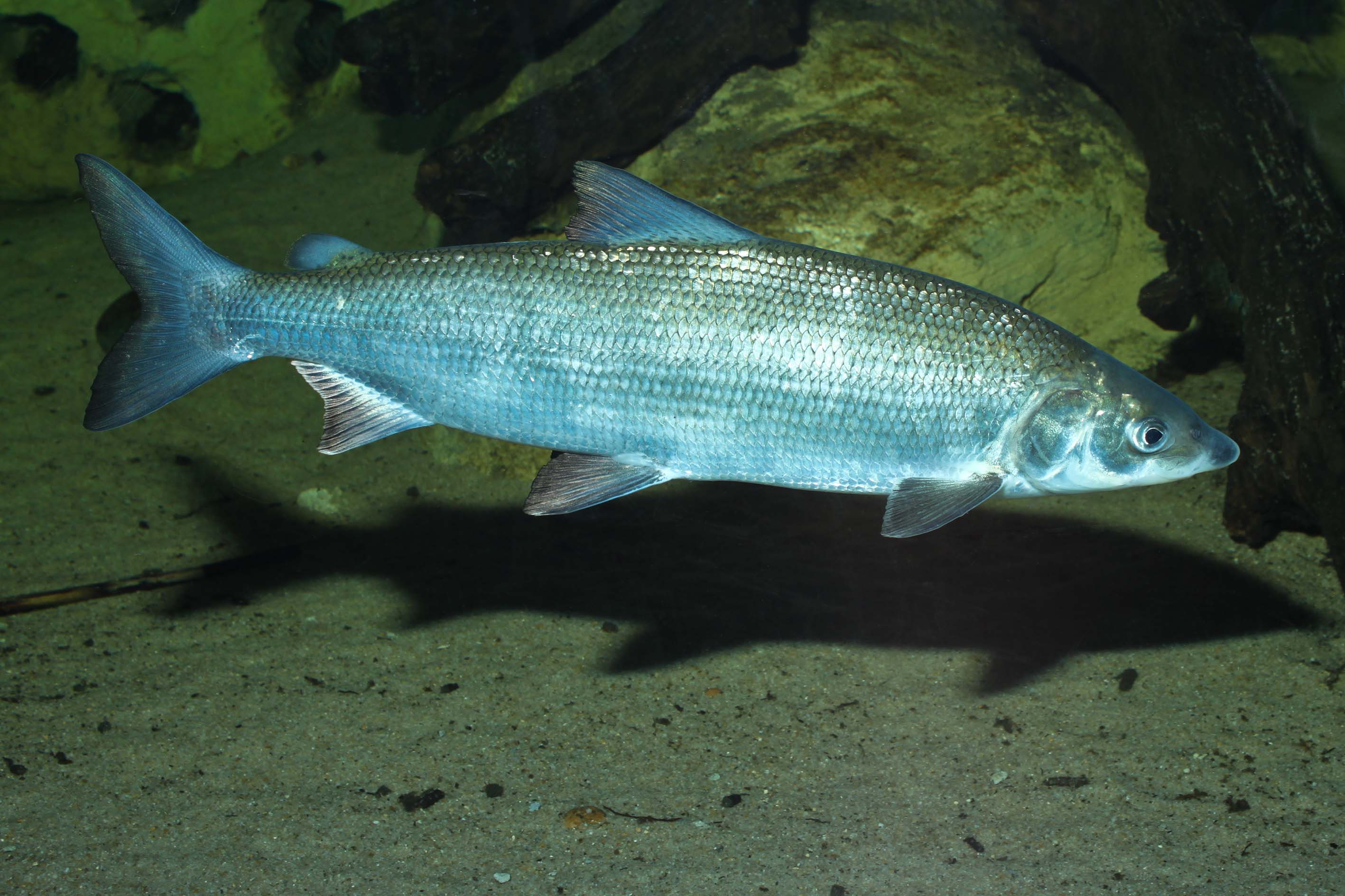Houting
Coregonus oxyrinchus
The houting is a salmonid fish that belongs to the entirely family. It is closely related to the more everyday hero, known from several of Jutland's inlets and lakes. Like other salmon, it spawns in the same watercourse where it also spends the first period of its life.
The North Sea houting lives and grows up in the Wadden Sea, but in the autumn months it migrates up to larger watercourses to spawn. The species spawns in the lower and middle parts of the watercourses, usually where the bottom width exceeds 4 metres.
Good flow and solid bottom
Males reach their sexual maturity at around 2 years old and females at the age of about 3 years. When ready to spawn, the sexually mature houting seeks out stretches with good flow, solid bottom and prevalence of winter-green water plants
The spawning period is short, only lasting about 3 weeks and takes place in November and December. After the spawning has been completed, the houting withdraws down to the lower areas of the watercourses.
The adhesive eggs are spawned freely in the water and then attach themselves to aquatic plants, rocks and gravel. The eggs hatch in February and March. The newly-hatched larvae measure approximately 10 mm.
From freshwater to saltwater
Studies show that newly-hatched houting larvae cannot survive in the saltwater in the Wadden Sea. It is not until they have reached a length of 30-40 mm that the fry's physiology changes to enable them to withstand the shift from fresh to saltwater.
In order for the houting to survive, it is likely that the newly-hatched fry need to be led away to to areas with stagnant water. This might be in i.e. smaller lakes and large river bends, where the early growth stages take place.
When the fry has reached a length of 30-40 mm in April-May, it migrates to the Wadden Sea, where the actual growing up takes place.
Facts about houting
Prevalance in the river Kongeå: Rare, but found in the mainstream.
Length: Have been caught up to 62 cm in Denmark.
Age: Up to 10 years, but can be older.


